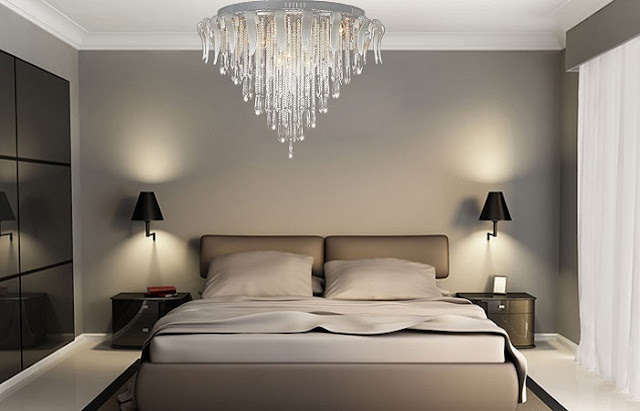What are the key elements to choose lighting for your Home
Lighting is absolutely key to good interior design within your home, affecting not only the perceived size of a room but also changing the ambience, your mood and how you use the space. There is far more to good lighting than simply choosing an attractive lampshade, with all sorts of elements needing to come together in harmony if you are to create a space which really shines.
When choosing the right sort of lighting for a particular room, there are four main elements you need to take into consideration...
When choosing the right sort of lighting for a particular room, there are four main elements you need to take into consideration...
Natural light:
In basement conversions or small city apartments, natural light is often lacking and your choice of lighting needs to compensate. Ceiling lights give a central glow which is not particularly effective in a room short on sunlight, and choosing wall lights, table lamps and up lights can help ensure light reaches even the dingiest corners. Strategically positioned wall lights and up lights help diffuse light around the room, while table lights can bring that warm and cosy feel. Picture lights can also be a wise choice in darker rooms, as they can concentrate light where you need it most. In en suites and family bathrooms without windows, specially designed bathroom lights can help give a natural feel – much more flattering when you've just woken up in the morning.
Colours:
The colour of a room greatly affects your mood, and lighting should complement your colour scheme. Rooms painted in darker colours tend to make a space feel smaller and perhaps more cramped, while light colours help give the impression of a much larger space. It therefore goes without saying that darker rooms would benefit from brighter interior lighting, with larger ceiling lights – perhaps with directional spotlight bulbs – helping illuminate the space. In lighter coloured rooms you can afford something a little more subtle, with softer wall lights or recessed lights helping cast light up and down, illuminating the ceilings and floors. This can be more effective than the overall glow from a central light, which can feel lost in an already bright space.
Room size:
The same principles apply to small rooms as they would to rooms painted in dark colours or lacking sunlight. If a space is small and perhaps feels a little cluttered with furniture, evenly spread light is key. Corner lamps and ceiling lights help spread light further, creating the illusion of more space. In larger rooms, ambient picture lights and table lamps can make the space feel cosier and perhaps less intimidating, allowing for a more relaxed atmosphere.
Furniture:
Your lighting should complement and bring out the most in your choice of furniture, and the guiding principles are the same. If you have dark leather sofas or dark mahogany furniture, for instance, a room can often feel enclosed and cramped. Using bright ceiling lights will open up the space, especially if you choose chandelier- style lights or shades which allow more light to shine through them. If your furniture is lighter or you've gone for a more minimalist, contemporary style to your room, stylish wall lights and picture lights are more directional and can help highlight statement
pieces of furniture which you particularly want to draw attention to.
Lighting is an important aspect of interior design as it enhances the aesthetic appeal and creates the mood and ambiance of a living space. We are one of the interior designers in bangalore we deliver different creative and innovative interior design solutions in various residential to office interior design environments that make the best use of space available by choosing the perfect light for your interiors.








Comments
Post a Comment